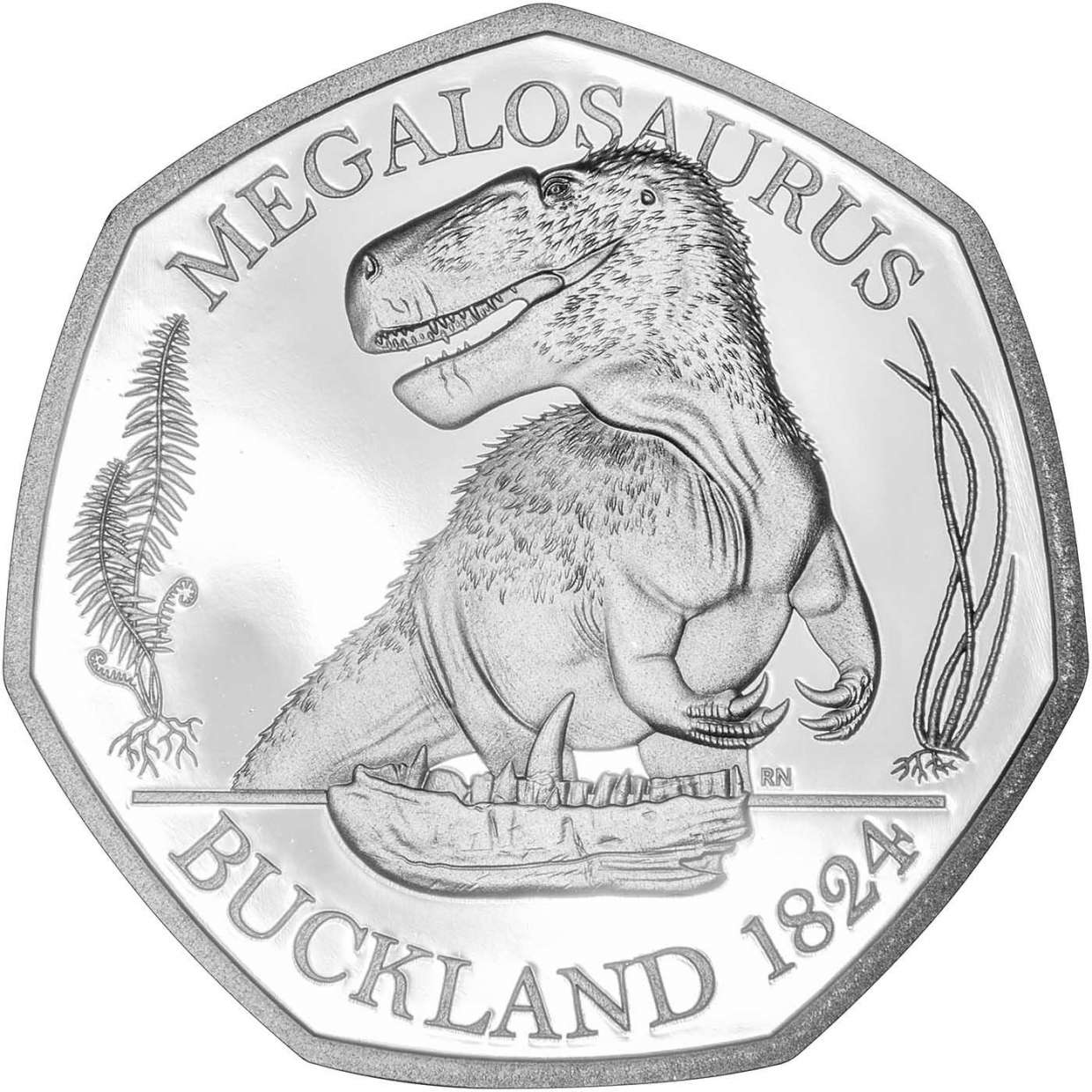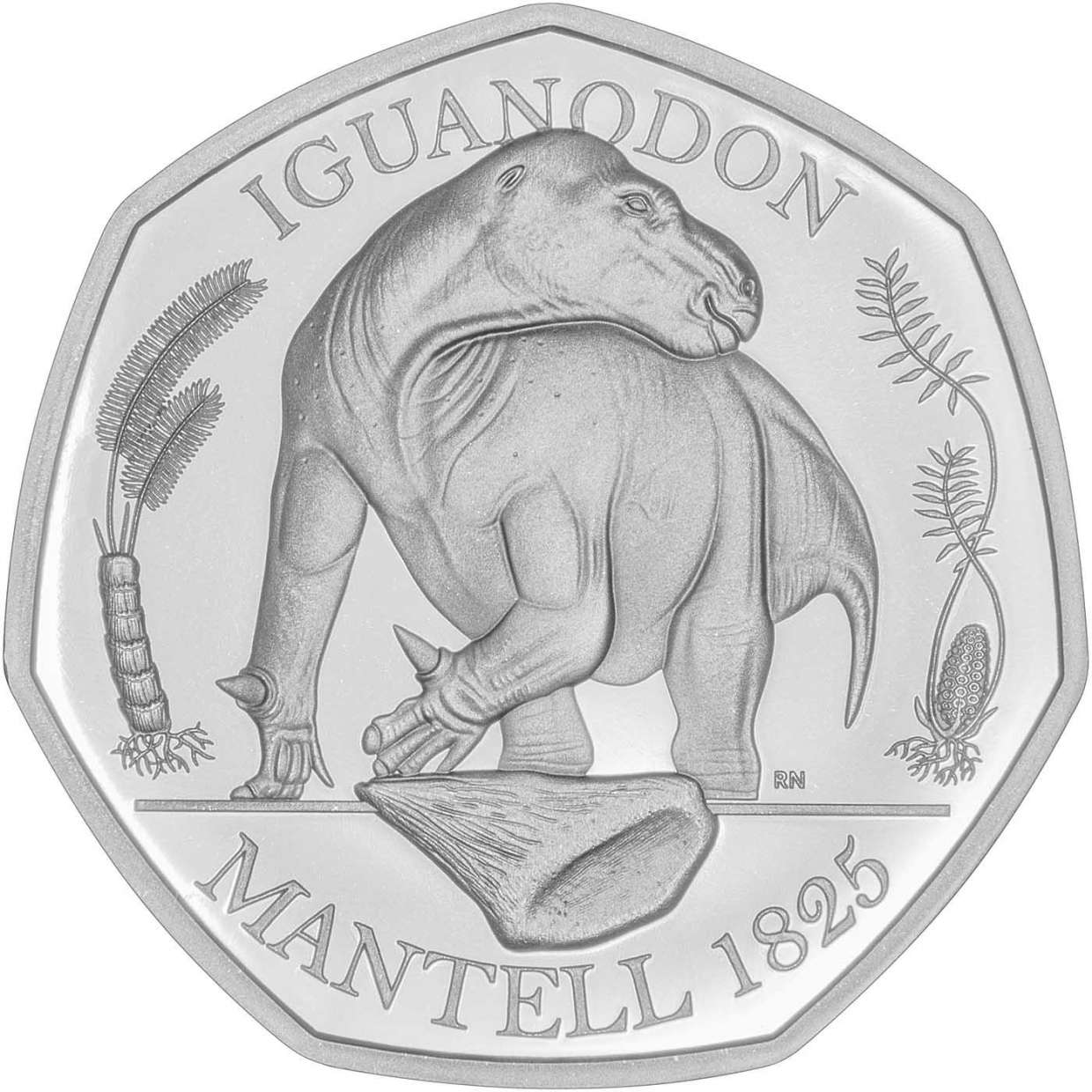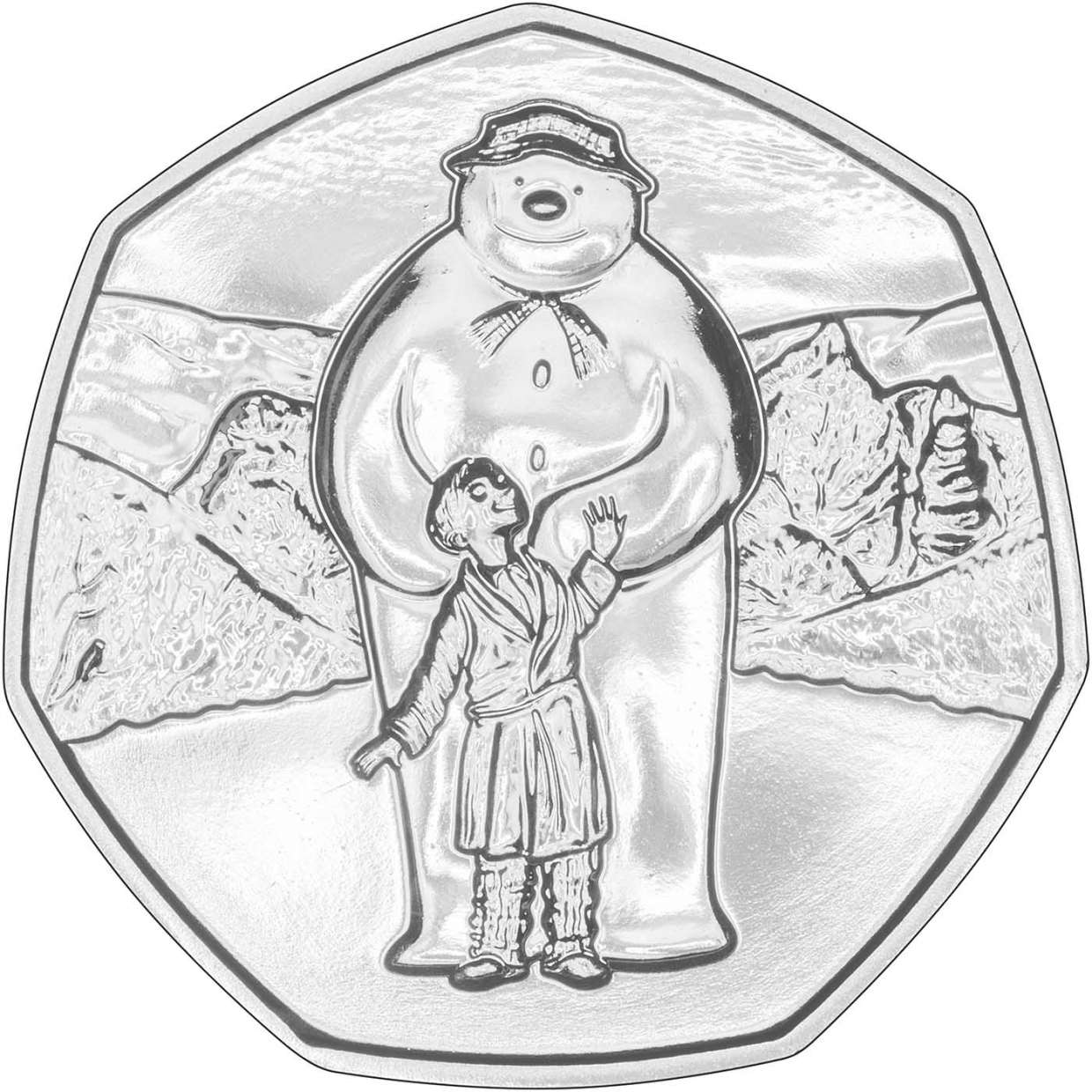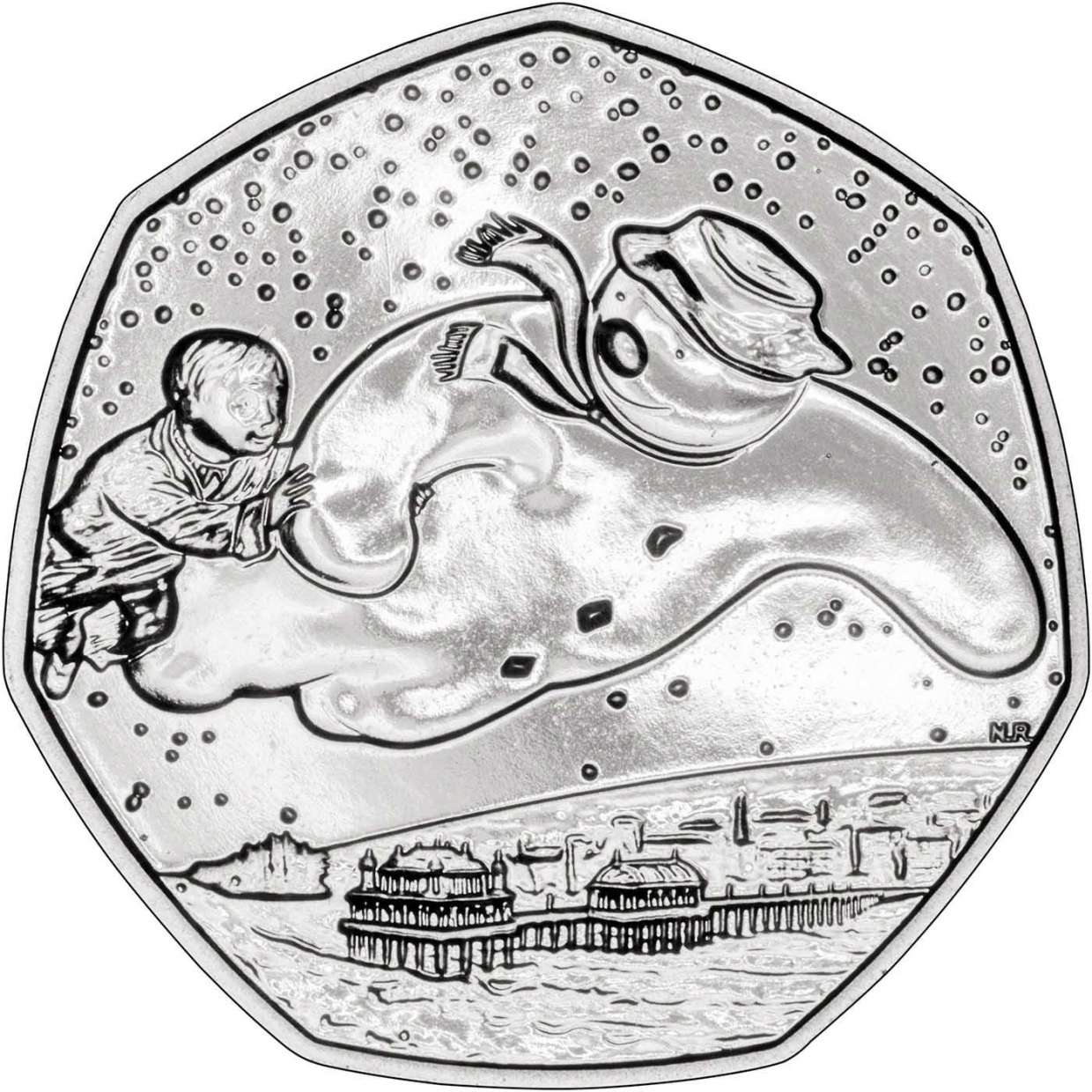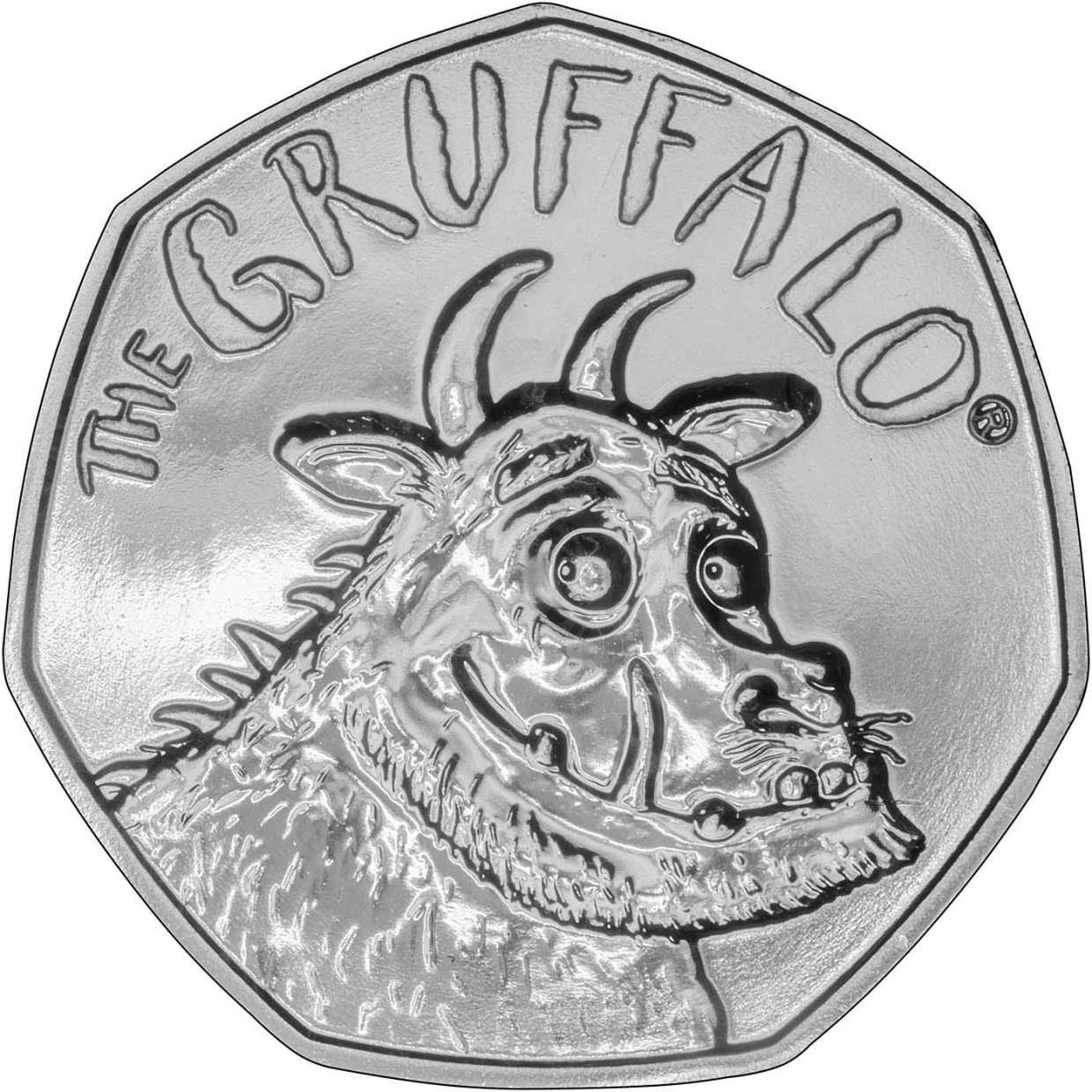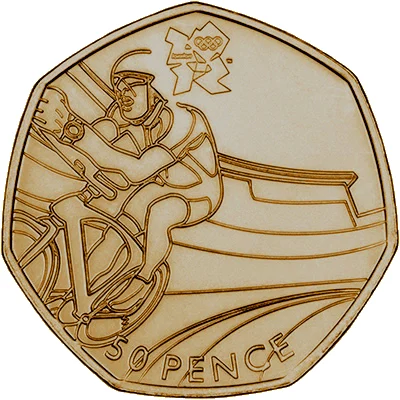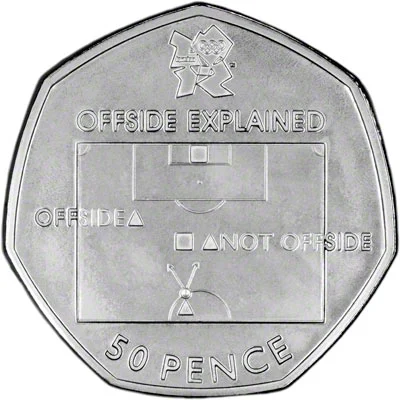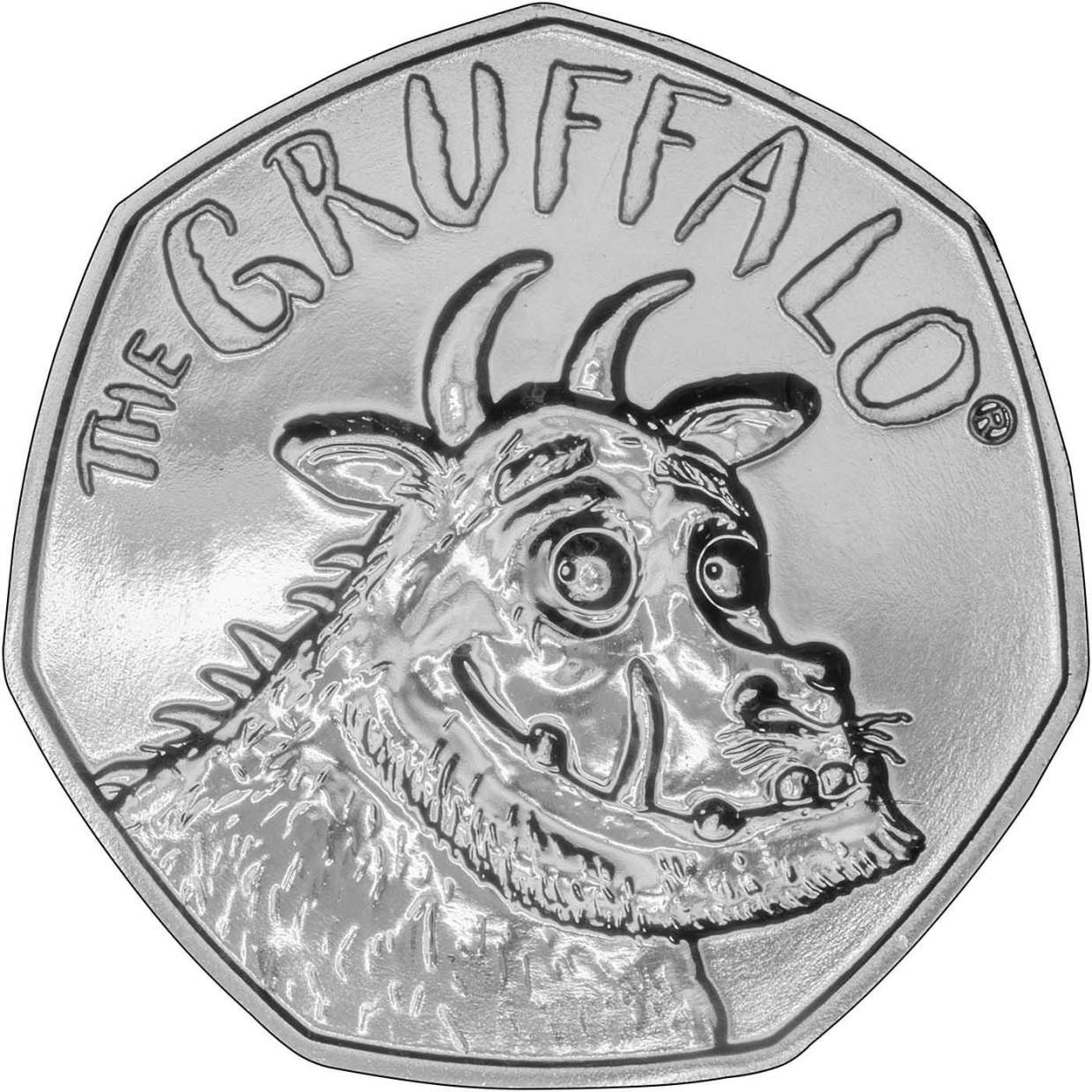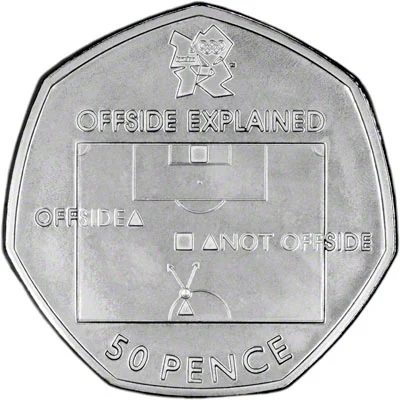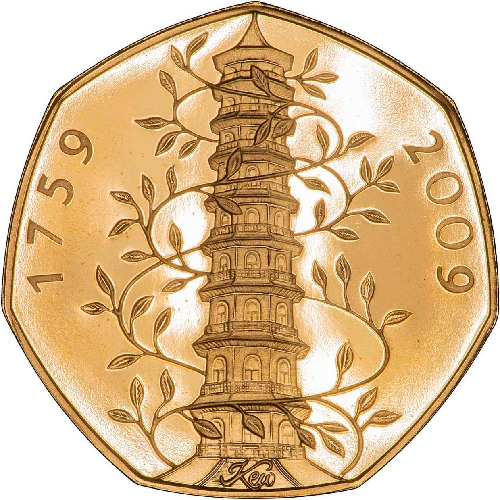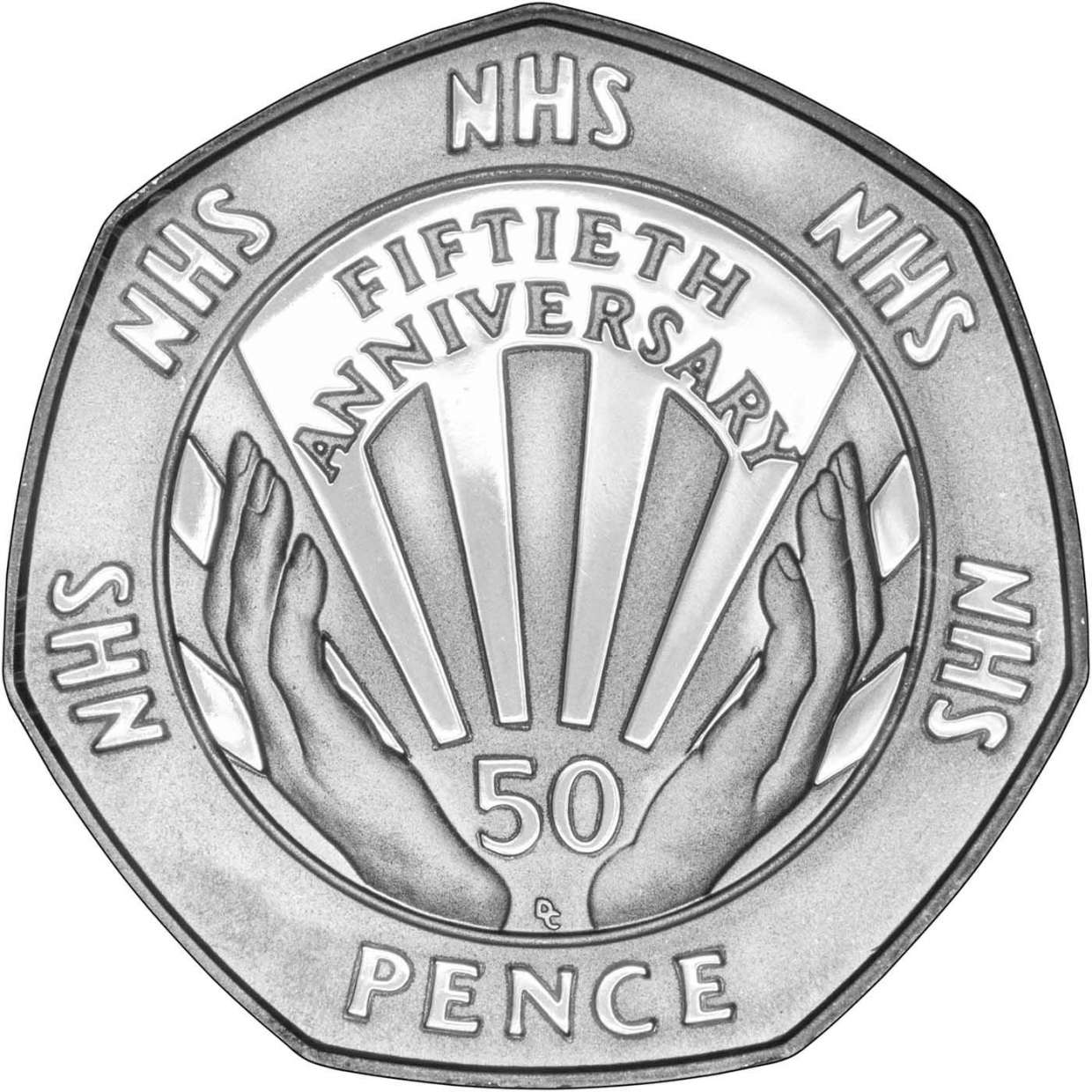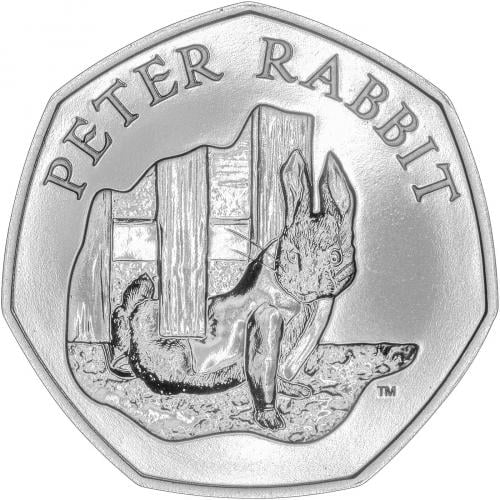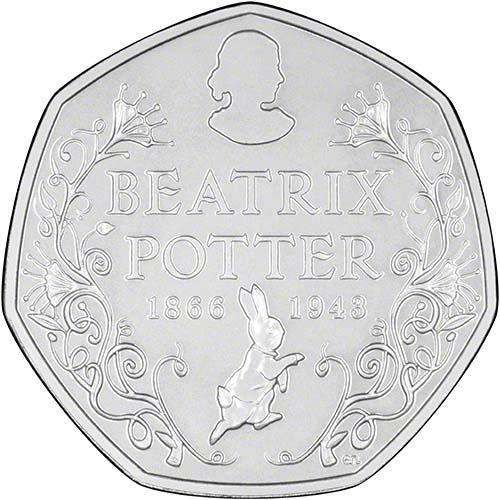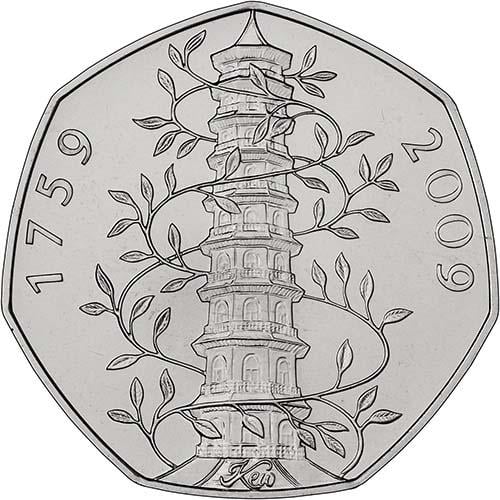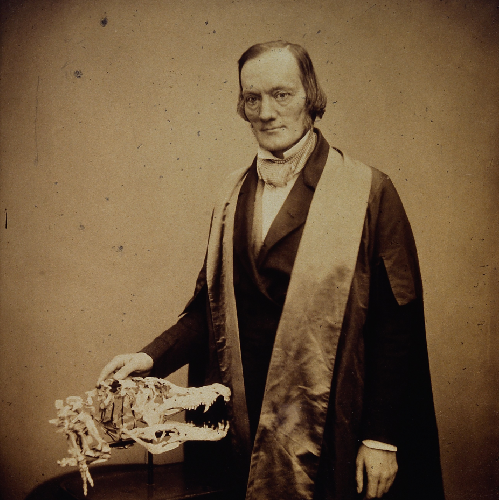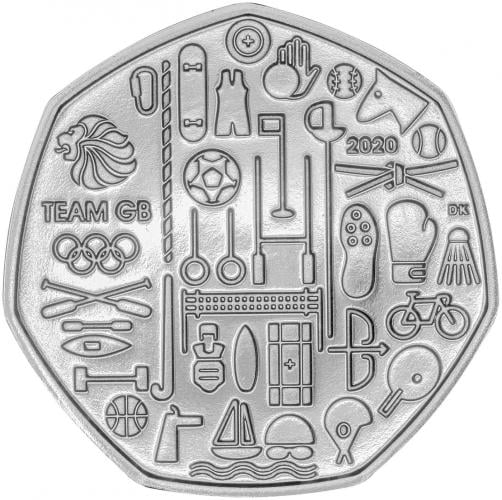Celebrating the First Dinosaur - the Megalosaurus 50p
Synopsis
The Megalosaurus 50p is the first of the Dinosauria Collection, which in turn is part of the Tales of the Earth Series. Along with the other dinosaurs featured in this collection (the Iguanodon and Hylaeosaurus) the Megalosaurus was a British discovery. This collection celebrates these dinosaurs in particular as they were the first to be unearthed and named. The wealth of fossils on the British Isles was studied closely by Sir Richard Owen. Owen was a renowned biologist and, after his study of the three newly discovered creatures, he coined the word ‘Dinosauria’ to describe the clade. He borrowed from ancient Greek the terms deinos (meaning 'terrible, potent or fearfully great') and sauros (meaning 'lizard or reptile') to create this new name.
Reverse Design
Designed by palaeo-artist Robert Nicholls with guidance from the Earth Sciences Department of the Natural History Museum, the reverse of the coin (pictured above) features a feathered Megalosaurus, which is controversial choice from the designer. The palaeontological world is spilt on the idea that Megalosaurus may have had feathers. Megalosaurus was part of the group of dinosaurs called theropods, which included meat-eaters like Tyrannosaurus Rex. Theropods most likely gave rise to modern birds and so the theory is that they may have been covered in fine feathers. The purpose of these may have originally been to keep the animals warm or attract mates and they had nothing to do with flight.
The dinosaur dominates the centre of the coin. According to most recent estimates the Megalosaurus would have been around two meters tall and between seven to eight metres in length, weighing in under a tonne. Although this is nowhere near the 13 meters in length and 8.8 tonnes of their Tyrannosaurus relations, the Megalosaurus was still impressive and one of the largest predators of its own (Middle Jurrasic) era. Tyrannosaurus Rex appeared much later in the Late Cretaceous period. The Megalosaurus appears less streamlined than some other carnivorous dinosaurs but this is because it was actually a very heavily-muscled and robust animal. Its hindlimbs, in particular, were very strong and although it was bipedal (walked on two legs) its forelimbs were also very strong and thickly-muscled to make good use of its three clawed ‘fingers’. The long thick tail, that balanced out the body of the creature, disappears below the separating line (as do the legs). So, these features are not fully displayed on the coin.
This was probably a conscious choice on behalf of the designer as the head of the Megalosaurus was large in comparison to its body and is very much the dominant feature on the coin. Although few examples of the skull exist, those fragments that do are larger than the corresponding skeleton and so it’s fair to say that the dinosaur had an uncommonly large head. The jaws in particular were huge and filled with long curved teeth, which can be clearly seen on the coin and were perfect for slicing meat from its prey. Below the separating line, we see the famous, fossilised lower jaw that was studied by William Buckland and led to the identification and naming of the creature. The dinosaur itself and the jaw bone are the only parts of the coin that are coloured on the colour printed versions of the coin. Above the creature, the inscription ‘MEGALOSAURUS’ arches across the top of the coin. Mesozoic plants appear on either side of the dinosaur and finally, the inscription ‘BUCKLAND 1824’ curves around the bottom.
Obverse Design
The obverse of the coin bears the fifth portrait of The Queen. Designed by Royal Mint engraver, Jody Clark, the fifth definitive UK coin portrait features a bust of Queen Elizabeth II wearing the King George IV State Diadem. This portrait shows an 88-year-old Queen with deep wrinkles around the eye and mouth areas. The Queen wears Diamond Jubilee drop pearl earrings and her chin is lifted slightly, which has been said to indicate that she is looking positively towards the future. The truncation is shaped into a sweeping curve. This portrait was introduced in 2015 and continues to be used today.
The inscription reads: ELIZABETH · II · D · G REG · F · D · 50 PENCE · 2019.
The First Dinosaur Ever Named
In 1815, the bones of giant animals were found at the Stonesfield quarry. The bones were bought by William Buckland, Professor of Geology at the University of Oxford and dean of Christ Church. By 1824 when he published his paper ‘Notice on the Megalosaurus or great Fossil Lizard of Stonesfield’, he had collected a large piece of a lower jaw, with teeth in place; several vertebrae; some fragments of pelvis and shoulder-bone and bones from upper and lower hind limbs. Buckland identified the creature as being a giant animal belonging to the Sauria or Lizards, which at the time included crocodiles, and named it Megalosaurus. This was the first time that a scientific paper describing and naming a dinosaur had been published. So, although there are certainly earlier discoveries and descriptions of dinosaurs this is the first example of an officially named genus.
Buckland’s main scientific exploits were in the field of Geology. He was a well-respected geologist and the first reader of Geology at Oxford University. He was also President of the Geological Society and along with Adam Sedgwick and Charles Lyell, he prepared the report that resulted in the formation of the Geological Survey of Great Britain. However, he had been intrigued by fossils ever since he was a child. He was born in Axminster near large quarries of lias, a hard limestone in which fossils are abundant. His father would take him on walks near the quarries where they collected Ammonites and other fossils. However, fossils weren’t his only hobby. He also had eccentric tastes in food. He used to say that he had eaten his way straight through the animal kingdom, and is even reported to have eaten the preserved heart of a French King!
Coin Varieties
| Date | Variety | Mintage |
|---|---|---|
| 2020 | Megalosaurus 50p Gold | 350 |
| 2020 | Megalosaurus 50p Silver | 3,000 |
| 2020 | Megalosaurus 50p Silver with Colour | 7,000 |
| 2020 | Megalosaurus BU with Colour 50p | 50,000 |
| 2020 | Megalosaurus BU 50p | UNLIMITED |
This range introduces an entirely new type of coin. The Dinosauria collection is the first to have a brilliant uncirculated (BU) coin with colour. The colouring process is usually reserved for the higher value silver proof versions of coins. In addition to this, the coloured BU coin is equipped with augmented reality technology. Another first for the Royal Mint.
The Megalosaurus 50p Gold Proof
Despite a price tag of £1020, the gold proof coin quickly sold out on the Royal Mint website. You might be forgiven for thinking that it was pretty expensive but with a mintage of only 350 pieces the Megalosaurus 50p is rare even for a gold proof coin. Some gold proof varieties, like the 1994 D-Day Gold Proof 50p, have mintages of over 1,800. As always, the gold coin is finished to proof standard and should be absolutely perfect. It comes in a polished wood presentation box and is accompanied by an authentication certificate and information leaflet. All of this is packed together in a box bearing illustrations based on scientifically accurate reconstructions.
The Megalosaurus Silver Proof
A particular treat for fans of the plain silver proof, the Royal Mint have brought the classic style back especially for the Dinosauria Collection. With a mintage of only 3,000, the colourless silver proof will be rarer than its coloured companion. Also, despite all of this, it is still a shade cheaper than the coloured coin at £60. Although it has now sold out on the Royal Mint website, you can pick up a bargain and buy one from Chards at just £55. It is presented in a black case and comes with both information leaflet and authentication certificate, in the illustrated box.
The Megalosaurus 50p Silver Proof with Colour
Always popular with collectors, colour printed silver proof versions of coins sell out quickly. The Megalosaurus 50p is no exception to this. However, there is no need to panic. If you missed out on the Royal Mail release, we’ve got your back! We still have stock and we’ve even knocked a pound off the Royal Mint RRP for you. The coin comes in an acrylic display case that shows enlarged illustrations of the plants that appear on either side of the Megalosaurus on the coin. A handwritten label of the name of the dinosaur runs across the top of the block. This seems to be the handwriting of the coin’s designer Robert Nicholls, which also appears in the information leaflet that supplements the coin. As always, the coin should have an authentication certificate.

The Megalosaurus 50p BU With Colour
As promised, the brand-new coloured BU coin comes with augmented reality technology. Once collectors have their coin, they can scan the packaging into the Royal Mint's Activate app and find out many additional facts, clips and images. This a new technology for the Royal Mint and has been used for the very first time across the Dinosauria range. Like the plain BU version, this coin comes embedded into the illustrated information leaflet. The 50,000 coloured BU coins are exclusive to the Royal Mint, so, you won’t be able to find one anywhere else until they start showing up on online auction sites. At £20 a coin, some cynics may think it a little gimmicky but it’s an interesting addition to the collection nonetheless.
The Megalosaurus 50p BU
Embedded into its enlightening information leaflet complete with illustrations from designer Robert Nicholls, the brilliant uncirculated version of the Megalosaurus coin is a great addition to any collection. However, you do have to remember to check whether or not the coin you are ordering will come in this presentation leaflet. Unlike the coloured version, the plain BU coin is not exclusive to The Royal Mint and if ordered from other coin dealers may arrive in their packaging, which is often a disappointment in comparison to The Royal Mint official presentation. If you buy from Chards, it will definitely come in the official Royal Mint packaging and it will also cost you a little less. We are selling the Megalosaurus 50p BU for just £9, saving you a pound on The Royal Mint price!
Related Blog Articles
This guide and its content is copyright of Chard (1964) Ltd - © Chard (1964) Ltd 2024. All rights reserved. Any redistribution or reproduction of part or all of the contents in any form is prohibited.
We are not financial advisers and we would always recommend that you consult with one prior to making any investment decision.
You can read more about copyright or our advice disclaimer on these links.


